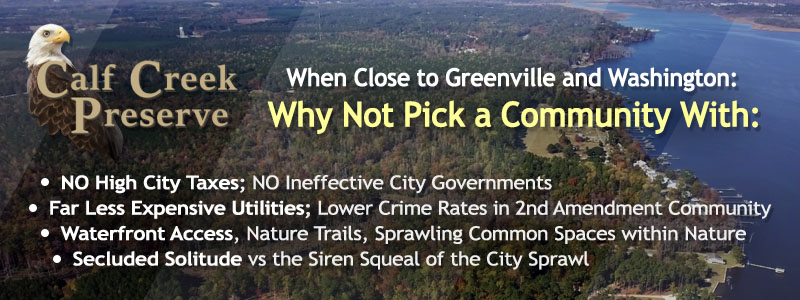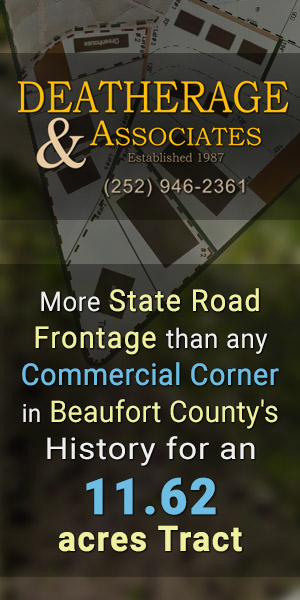Boldly Committed to Truth Telling in the False Face of Fakery
Young Invincibles Are Just Not That Into Obamacare
Publisher's note: The author of this post is Katherine Restrepo, who is Health and Human Services Policy Analyst for the John Locke Foundation. She is also a contributor to the Carolina Journal, John Hood Publisher.
RALEIGH As couples celebrated the most recent Valentine's Day, it looked as if Obamacare's love for the young invincibles remained unrequited.
Enrollment in the exchange health plans has greatly increased since last month, but the number of "young invincibles" - the low-risk population needed to sign up to balance out the flood of high-risk policyholders - remains stagnant.
So now, in an attempt for the federal health law to win over the desirable low-risk youngins', insurers and U.S. Senate Democrats have proposed to offer copper plans. The Wall Street Journal explains:
These copper plans certainly resemble the exchange's catastrophic plans. However, unlike the catastrophic plans, subsidies will be available to copper policyholders. At this point in time, government officials and insurers are scrambling to stabilize the future of the health insurance exchanges.
Earlier this month, the U.S. Department of Health and Human Services released (PDF) the most updated Obamacare exchange enrollment numbers. If uninsured individuals don't purchase health insurance by March 31, they will be hit with a tax of $95 or 1 percent of income, whichever is greater.
Obamacare's exchange enrollment period began Oct. 1 and is supposed to end March 31.
But hey, that deadline could easily change. With the not-so-surprising recurring pattern of Obamacare delays, the open enrollment date will probably be extended in some shape or form if the administration fails to meet its goal of 7 million enrollees by March. At this point, the CBO projects 6 million will enroll within this time frame.
According to the Obama administration, 3.3 million individuals have gone shopping for an Obamacare plan in the individual health insurance market. It turns out, however, that more than 89 percent of these individuals already had insurance. They just couldn't keep their old plans because the plans did not comply with the law's standards for health coverage. Even if customers liked them. Insurers refer to this scenario as "churning."
Here's North Carolina's breakdown:
When glancing over some of these statistics, it looks like North Carolina's enrollment process fares much better than other states'. After all, the state currently ranks top five in enrollment numbers. Obamacare stalwarts will say that the law is proving to be a success, since 90 percent of enrollees qualify for taxpayer subsidies that will make their quality health plans affordable - even "free."
But if you're a skeptic of the law, continue to be one. Let's unravel the spin:
A large reason why North Carolina leads the pack in enrollment is really because legislators rightly rejected Obamacare's optional Medicaid expansion. Many individuals who would otherwise have been covered under the law's Medicaid expansion will instead have access to private health plans offered on the exchange at minimal to no cost. Low-income individuals living above 100 percent of the federal poverty level will be one of the few populations who actually benefit from the law. This population contributes to so many enrollees (90 percent) qualifying for financial assistance. The national average is 82 percent.
How significant are the subsidy amounts for others? According to the Weekly Standard, they're not so hefty:
Circling back to the enrollment numbers, McKinsey & Company reports that North Carolina has met only 56 percent of its target. And this 160,000 number still remains inflated, as an individual is not considered a true enrollee until his health insurance premium has been paid.
Insurers now report that 20 percent of individuals have yet to pay or are waiting for their payment to process accurately, due to the defective healthcare.gov website.
Go Back
RALEIGH As couples celebrated the most recent Valentine's Day, it looked as if Obamacare's love for the young invincibles remained unrequited.
Enrollment in the exchange health plans has greatly increased since last month, but the number of "young invincibles" - the low-risk population needed to sign up to balance out the flood of high-risk policyholders - remains stagnant.
So now, in an attempt for the federal health law to win over the desirable low-risk youngins', insurers and U.S. Senate Democrats have proposed to offer copper plans. The Wall Street Journal explains:
The plans likely would have lower premiums, but purchasers would pay more of their ordinary health costs upfront. Greater coverage would kick in for serious, unforeseen health episodes that would require, for example, a hospital stay.
Copper plans would cover, on average, 50% of medical costs, and while consumers' out-of-pocket expenses would still be capped, that limit likely would be higher than the $6,350 maximum for individuals and $12,700 for families currently set by the law.
Copper plans would cover, on average, 50% of medical costs, and while consumers' out-of-pocket expenses would still be capped, that limit likely would be higher than the $6,350 maximum for individuals and $12,700 for families currently set by the law.
These copper plans certainly resemble the exchange's catastrophic plans. However, unlike the catastrophic plans, subsidies will be available to copper policyholders. At this point in time, government officials and insurers are scrambling to stabilize the future of the health insurance exchanges.
Earlier this month, the U.S. Department of Health and Human Services released (PDF) the most updated Obamacare exchange enrollment numbers. If uninsured individuals don't purchase health insurance by March 31, they will be hit with a tax of $95 or 1 percent of income, whichever is greater.
Obamacare's exchange enrollment period began Oct. 1 and is supposed to end March 31.
But hey, that deadline could easily change. With the not-so-surprising recurring pattern of Obamacare delays, the open enrollment date will probably be extended in some shape or form if the administration fails to meet its goal of 7 million enrollees by March. At this point, the CBO projects 6 million will enroll within this time frame.
According to the Obama administration, 3.3 million individuals have gone shopping for an Obamacare plan in the individual health insurance market. It turns out, however, that more than 89 percent of these individuals already had insurance. They just couldn't keep their old plans because the plans did not comply with the law's standards for health coverage. Even if customers liked them. Insurers refer to this scenario as "churning."
Here's North Carolina's breakdown:
- 160,000 individuals have selected a marketplace plan from either Blue Cross and Blue Shield or Coventry Health Care of the Carolinas
- 25 percent are ages 18-34
- 30 percent are ages 55-64
- 72 percent are silver plans
- 90 percent qualify for a premium assistance subsidy
When glancing over some of these statistics, it looks like North Carolina's enrollment process fares much better than other states'. After all, the state currently ranks top five in enrollment numbers. Obamacare stalwarts will say that the law is proving to be a success, since 90 percent of enrollees qualify for taxpayer subsidies that will make their quality health plans affordable - even "free."
But if you're a skeptic of the law, continue to be one. Let's unravel the spin:
A large reason why North Carolina leads the pack in enrollment is really because legislators rightly rejected Obamacare's optional Medicaid expansion. Many individuals who would otherwise have been covered under the law's Medicaid expansion will instead have access to private health plans offered on the exchange at minimal to no cost. Low-income individuals living above 100 percent of the federal poverty level will be one of the few populations who actually benefit from the law. This population contributes to so many enrollees (90 percent) qualifying for financial assistance. The national average is 82 percent.
How significant are the subsidy amounts for others? According to the Weekly Standard, they're not so hefty:
Obamacare's taxpayer-funded subsidies are substantial for the near-poor and some of the near-elderly, but they do virtually nothing for most of the young or the middle class. Obamacare's neglect of these two rather significant groups opens up a huge political vulnerability. A 2017 Project study of Obamacare's subsidies in the 50 largest American counties shows that a typical 26-year-old man who makes $35,000 would get no Obamacare subsidy whatsoever for the cheapest-priced "bronze" plan. Nor would a 36-year-old woman who is making that same $35,000.
Circling back to the enrollment numbers, McKinsey & Company reports that North Carolina has met only 56 percent of its target. And this 160,000 number still remains inflated, as an individual is not considered a true enrollee until his health insurance premium has been paid.
Insurers now report that 20 percent of individuals have yet to pay or are waiting for their payment to process accurately, due to the defective healthcare.gov website.
| Beaufort County Commissioners' Retreat Will be Poorly Attended | Carolina Journal, Editorials, Op-Ed & Politics | JLF Education Expert Recommends New Groups To Study Common Core |
Latest Op-Ed & Politics
|
eve 45% of Latinos support mass deportation
Published: Thursday, April 25th, 2024 @ 12:40 pm
By: John Steed
|
|
this at the time that pro-Hamas radicals are rioting around the country
Published: Thursday, April 25th, 2024 @ 8:01 am
By: John Steed
|
|
Pro death roundtable
Published: Wednesday, April 24th, 2024 @ 12:39 pm
By: Countrygirl1411
|
|
populist / nationalist anti-immigration AfD most popular party among young voters, CDU second
Published: Wednesday, April 24th, 2024 @ 11:25 am
By: John Steed
|
|
political scheme behhind raid on Mar-a-Lago
Published: Wednesday, April 24th, 2024 @ 9:16 am
By: John Steed
|
|
how many of these will come to North Carolina?
Published: Tuesday, April 23rd, 2024 @ 1:32 pm
By: John Steed
|
|
Barr had previously said he would jump off a bridge before supporting Trump
Published: Tuesday, April 23rd, 2024 @ 11:37 am
By: John Steed
|
|
Babis is leader of opposition in Czech parliament
Published: Tuesday, April 23rd, 2024 @ 10:28 am
By: John Steed
|






















